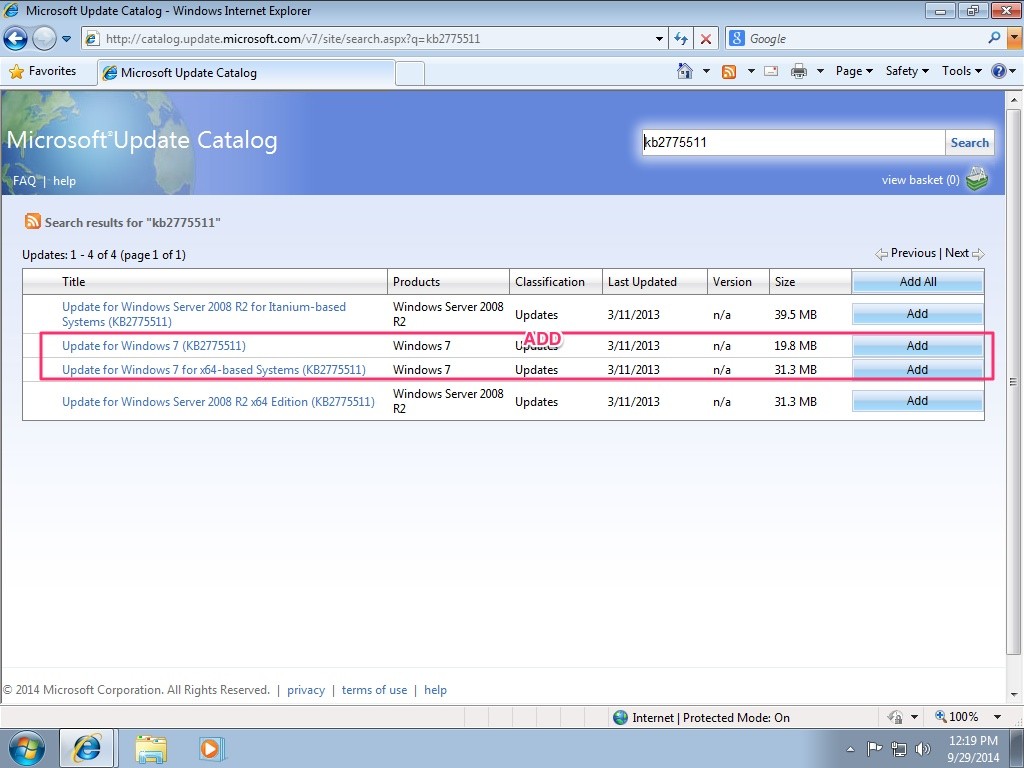It's been more than 2 years since Microsoft released Service Pack 1 (SP1) for Windows 7 and Windows Server 2008 R2. Since then all Windows 7 and Server 2008 R2 users are waiting for Service Pack 2 (SP2). Actually there are 100+ new updates and hotfixes which have been released after Service Pack 1. Windows Server 2008 Service Pack 2 x64 (SP2) and Windows Vista Service Pack 2 x64 (SP2) is an update to Windows Server x64 and Windows Vista x64 that addresses feedback from our customers. Windows Media Player 11 for Windows XP. Jul 30, 2019 The recommended (and easiest) way to get updates such as service packs is to turn on Windows Updates for Windows 8.1, Windows 8, and Windows 7 and let Windows notify you when the updates you need are ready to install. The latest service pack for Windows 7 is Service Pack 1 (SP1).
One of the most vexing aspects of a Windows 7 reinstall is that even after you install the operating system and Service Pack 1, you can expect to spend a ridiculous amount of time applying patches that came post-SP1. Service Pack 1 came out in 2011, and there have been dozens and dozens of fixes over the past five years.
For the longest time, this was a sore spot among users. That and the fact that Microsoft was reluctant to issue a second service pack with just a rollup of current fixes.
Well, that wish has been granted. The company today announced a 'convenience rollup' for Windows 7 Service Pack 1 and Windows Server 2008 R2 that contains all of the security and non-security updates it has issued for the two operating systems since the Windows 7 Service Pack up through April 2016.
For whatever reason, it is not named 'Service Pack 2,' but who cares. At least we have it. But be warned: it will not be delivered over the Windows Update service the way Service Pack 1 is made available to a fresh Windows 7 install.
A challenge to get
Getting it, though, is currently proving a challenge. The blog post announcing the servi-, er, convenience rollup says the download is available only via Microsoft's Update Catalog site. It will not be distributed via Windows Update. On clicking on the Microsoft link, I got this error:
To use this Web site's full functionality, you must be running Microsoft Internet Explorer 6.0 or later.
To upgrade to the latest version of the browser, go to the Internet Explorer Downloads Website.
If you prefer to use a different Web browser, you can get updates from the Microsoft Download Center.
IE 6? When was that page last revised?

So, I loaded the page in IE 11 instead of Firefox. After installing an ActiveX add-on, I was given a catalog with either the Windows 7 rollup or the Server 2008 rollup, plus a separate Windows 7 patch. I tried to add them to the cart, and no luck. I can't download it. That's amateur hour I would not expect from Microsoft these days.
Why it isn't called Service Pack 2
One reason why Microsoft is not calling it Service Pack 2 is because it requires Service Pack 1 to be installed. You could install SP2 for Windows XP without having to install SP1 first. So, the dependency doesn't qualify it as a service pack.
Windows 7 Pro 64 Bit Sp2 Iso
For updates released after April 2016, Microsoft also plans to produce monthly rollups of non-security updates for Windows 7, Windows 8.1, Windows Server 2008 R2 and Windows Server 2012/R2. This will be a continuously evolving, cumulative batch of non-security fixes. This package will be distributed over Windows Update.
Windows 7 64 Bit Sp2 Iso

:max_bytes(150000):strip_icc()/Lifewire_Windows_Update_2624595_V4-4fdbd62b700a49e8809be87537c8bd16.png)
Windows 7 64 Bit Sp2 Offline Installer
The rollup, service pack, call it what you will, is desperately needed and a good decision. But making it available from a long-abandoned web page that is accessible only via Microsoft's browser, requires an ActiveX add-on, and doesn't work is just baffling. It really gives off an air of sloppiness, and again, I would not expect that from Microsoft these days.